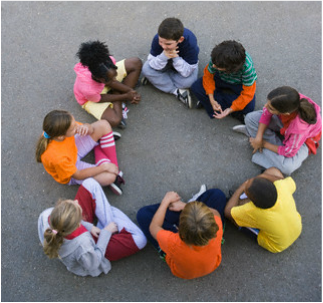
Author: Danielle Cotti, M.Ed., BCBA
Social Skills Coordinator
Recess can typically be a troublesome time for many school-age children; there may be little structure, many options, and little adult guidance. For children diagnosed on the spectrum, the lack of structure can result in lack of initiation, making poor play choices, or a tendency to avoid socializing. Research indicates that the most effective way to target social skills during recess is to make the abstract concrete by utilizing visual schedules or checklist, defining appropriate behavior, and creating rules for interacting during the recess period (Krasny, et. al., 2003). A visual recess schedule can be utilized for those students that work well with a visual list of items that need to be completed. This schedule can be broken into increments of time and presented to the child prior to the recess period. McKinnon and Krempa (2002), the authors of Social Skills Solutions, have detailed effective strategies in utilizing visual schedules and lists to increase independence during recess. The book includes examples of how to structure the visual supports, how to implement this accommodation, and data collection systems to assess the effectiveness of the intervention.
A prerequisite to utilizing a schedule or checklist is the ability to self-monitor one’s own behavior. Self-monitoring is defined as the ability to observe one’s own behavior and collect data on the target behavior’s occurrence or nonoccurrence (Cooper, Heron, & Heward, 2007). This technique is especially effective for the increase of social skills, because it is a monitoring system that does not require prompting from another person; therefore, it is easier to fade intervention. Research has demonstrated that the use of self-monitoring interventions result in a reduction in adult intervention (Rock, 2005). These factors make it ideal for recess, given the lack of adult availability during recess times, and the need to utilize social skills.
An intervention that requires no prerequisite skills is the use of a social narrative to define appropriate social behavior during recess. A social narrative can be composed either to describe how the learner should interact at recess or can be presented as a list of rules to follow during recess. Creating a concrete description of expected behavior increases the likelihood that a child diagnosed with autism will interact successfully during recess. Expected behaviors for recess should include ideas regarding what to play, how to join in play with others, and who the child can look to for assistance when needed. More information of the effectiveness of, and ways to implement social narrative, can be found at: http://autismpdc.fpg.unc.edu/sites/autismpdc.fpg.unc.edu/files/SocialNarratives_factsheet.pdf
Proactively planning for recess will result in an enjoyable social experience and increased independence for the learner; creating a concrete plan, with the input of the learner, will increase the likelihood of successful implementation of the recess plan. Resources are available to assist in this process, including http://autismpdc.fpg.unc.edu/, which provides clinicians and educators effective, research-based intervention and Social Skills Solutions (McKinnon & Krempa, 2002), a manual for teaching social skills for children on the autism spectrum.
Resources:
Cooper, J.O., Heron, T.E., Heward, W.L., (2007). Applied Behavior Analysis, Second Edition. Pearson Education, Inc: Saddle River, New Jersey.
Krasny, L., Williams, B.J., Provencal, S., Ozonoff, S. (2003). Social skills interventions for the autism spectrum: essential ingredients and a model curriculum, Child and Adolescent Psychiatric Clinics, 12, 107-122.
McKinnon, J. & Krempa, K. (2002). Social skills checklist. Social Skills Solutions: A Hands-on Manual for Teaching Social Skills to Children with Autism. DRL Books, Inc: New York, NY.
Rock, M.L. (2005). Use of strategic self-monitoring to enhance academic engagement, productivity, and accuracy of students with and without exceptionalities. Journal of Positive Behavior Interventions. 7(1), 3-17.
Leave a Comment